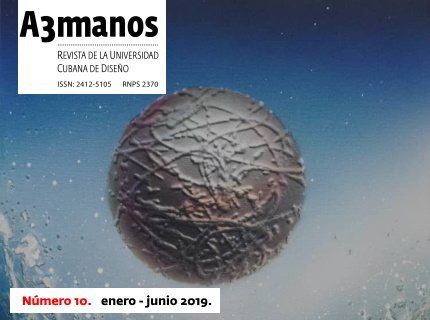From partial insights to comprehensive considerations around design management.
##plugins.themes.bootstrap3.article.main##
Abstract
Design management has barely exceeded its initiation process in the life of organizations and in administrative thinking. It is enough to see how a large number of texts dedicated to design management start to explain and defend its importance. Likewise, there are many events and communicative materials that call for a deepening of the culture of design in general and there are not few examples that, in our material and symbolic world, reflect the absence of design in its conception.
It could not be expected then that the management of this activity, which emerged as a concept in the literature just half a century ago, would occupy a space in organizations more expeditiously. There are undoubted remnants of misunderstanding regarding this specialty belonging to the professional universe of design; but, at the same time, more and more criteria are added to its defense as a strategic resource and as a singular source of innovation and competitiveness.
According to Mary McBride, director of the Design Management Program at the Pratt Institute, design management is often a misunderstood term, which originally took its meaning from the traditional definition of managing a design department in a firm; when it really comes down to “design-minded leadership” (i).
##plugins.themes.bootstrap3.article.details##

This work is licensed under a Creative Commons Attribution-NonCommercial-ShareAlike 4.0 International License.
- Attribution — You must give appropriate credit , provide a link to the license, and indicate if changes were made . You may do so in any reasonable manner, but not in any way that suggests the licensor endorses you or your use.
- NonCommercial — You may not use the material for commercial purposes .
- No additional restrictions — You may not apply legal terms or technological measures that legally restrict others from doing anything the license permits.
- ShareAlike — If you remix, transform, or build upon the material, you must distribute your contribution under the same license as the original. NOTE: This point applies to numbers 1 to 20 of the magazine with the previous CC-BY-NC-SA 4.0 license. Does not apply to the new CC BY-NC 4.0 license from Volume 11, Number. 21 (2024).
References
Borja de Mozota, Brigitte (2003). Design and competitive edge. A model for design management excellence in European SMEs. Disponible en:
https://bura.brunel.ac.uk/bitstream/2438/1387/1/Design%20and%20Competitive%20 Edge.pdf. Consultado el 15 agosto 2018.
Blaich, Robert (1993). Product Design and Corporate Strategy. Ed. McGraw-Hill. New York.
Cautela, C., Zurlo, F., Ben Yousef, K., Magne, S. (2012). Instrument de design management. Théorique et cas pratiques. De Boeck. Bruselas. Disponible en: https://www.decitre.fr/media/pdf/feuilletage/9/7/8/2/8/0/4/1/9782804121662.pdf
Consultado el 29 de agosto de 2018.
Chaves, Norberto (2017). Saber gestionar el diseño. La formación del directivo: de la improvisación a la profesionalización. La Tiza, no. 2, pp. 10-12.
DMI (2918). Design Management Institute (en línea) Disponible en: https://www.dmi.org/page/What_is_Design_Manag. Consultado el 21 de agosto de 2018
Farr, Michael (1965). Design management. Why is it needed now? Design Journal, pp.38-39. Disponible en:
https://vads.ac.uk/diad/article.php?title=200&year=1965&article=d.200.22. Consultado el 17 de agosto de 2018.
Fairclough, Norman. El análisis crítico del discurso y la mercantilización del discurso público: las universidades. Discurso y Sociedad, vol. 2 (1), pp. 170-185. Disponible en: http://www.dissoc.org/ediciones/v02n01/DS2(1)Fairclough.pdf. Consultado el 18 de diciembre de 2018.
García-Espinosa, Pedro (2017). Los caminos que conducen al diseño. La Tiza, no. 2, pp. 2-5.
García Álvarez, Ibet. Un nuevo desafío para los profesionales creativos. La Tiza, no. 2, pp. 2-5.
Herrero García, Gisela (2018). Mejor diseño = mejor país. La Tiza, no. 4, pp. 6-9.
HSLU, Hochschul Luzerne (2016). The rol of design management. Disponible en: https://cdn.ymaws.com/www.dmi.org/resource/resmgr/pdf_files/Lucerne_School_of_A rt_&_Desi.pdf. Consultado el 15 agosto 2018.
Icograda (2011). Icograda Design Education Manifesto. Disponible en https://www.ico- d.org/database/files/library/IcogradaEducationManifesto_2011.pdf. Consultado el 15 de septiembre de 2018. p.8
Ivañez, José María (2000). La gestión del diseño en la empresa. Ed. McGraw-Hill. Madrid.
Kootstra, Gert L. (2009). The incorporation of design management in today’s business pratices. Centre for Brand, Reputation and Design Management (CBRD), INHOLLAND University of Applied Sciences, Rotterdam. Disponible en:
https://www.bcd.es/site/unitFiles/2585/DME_Survey09-darrera%20versi%C3%B3.pdf. Consultado el 15 agosto 2018
Lavernia, Nacho & Lecuona, Manuel (2008). Gestión del diseño. El valor del diseño. Asociación de Diseñadores de la Comunidad Valenciana ADCV. Valencia.
Lecuona López, Manuel (1998). Conceptos básicos en la gestión del diseño en las pymes. Universidad Politécnica de Valencia. Valencia
Lecuona, Manuel (2005). Manual sobre gestión de diseño para empresas que abren nuevos mercados. Barcelona Centro de Diseño. Disponible en: https://www.bcd.es/site/unitFiles/2122/GD_Manualsobregesti%C3%B3ndeldise%C3
%B1o.pdf. Consultado el 23 de julio de 2018.
Manrique López, Aida (2016). Gestión y diseño, convergencia disciplinar. Revista Pensamiento y Gestión, no. 40. Disponible en
http://rcientificas.uninorte.edu.co/index.php/pensamiento/article/viewFile/8808/8593. Visto el 21 de julio de 2018.
McBride, Mary (2007). Design Management: future forward. Design Management Review. Disponible en http://www.bezalel.ac.il/res/mdes_shonot/second_gear_3/Design_Management_futur e_forward.pdf. Consultado el 15 agosto 2018.
Montaña, Jordi y Moll, Isa (2006). La gestión del diseño. Disponible en: http://disseny.ivace.es/es/diseno-y-empresa/gestion-de-diseno/gestion-de- diseno.html. Consultado el 22 de julio de 2018.
ONDi, Oficina Nacional de Diseño (2015). Sistema Nacional de Evaluación de la Calidad del Diseño, La Habana, vol.I.
Pérez Pérez, Milvia & Peña Martínez, Sergio (2014). Diseño. Una definición integradora. A3 manos, no. 1, pp. 21-37
Pérez Pérez, Milvia & Peña Martínez, Sergio (2015). Diseño. El objeto de la profesión. A3 manos, no. 2, pp. 5-26
Peña, Sergio (2018). Teoría de la Gestión de Diseño, no. 2. Conferencia impartida en Maestría de Gestión de Diseño, II ed. (Presentación de power point, diapositiva 13). La Habana.
Roca, Monlau Y. (2013). Diccionario Etimológico de la Lengua Castellana. Forgotten Books. (En línea). Disponible en: https://escritoresquenadielee.files.wordpress.com/2015/05/diccionario_etimoloygico_ de_la_lengua_castellana_1400021846.pdf. Consultado el 21 de agosto de 2018.
Torres, S., Mejía, A. Una visión contemporánea del concepto de administración: revisión del contexto colombiano. Cuadernos de Administración no. 32, pp.111-133. Disponible en: http://www.scielo.org.co/pdf/cadm/v19n32/v19n32a05.pdf. Consultado el 15 de octubre de 2018.
World Design Organization (2018a). Definition of Industrial Design. Disponible en: http://wdo.org/about/definition/. Consultado el 12 de septiembre de 2018, párrafo 1ro.
World Design Organization (2018b). Industrial Design Definition History. Disponible en: http://wdo.org/about/definition/industrial-design-definition-history/. Consultado el 12 de septiembre de 2018, párrafo 7mo.
Zimmermann, Yves (1998). Del Diseño. Ed. Gustavo Gili. Barcelona.






















